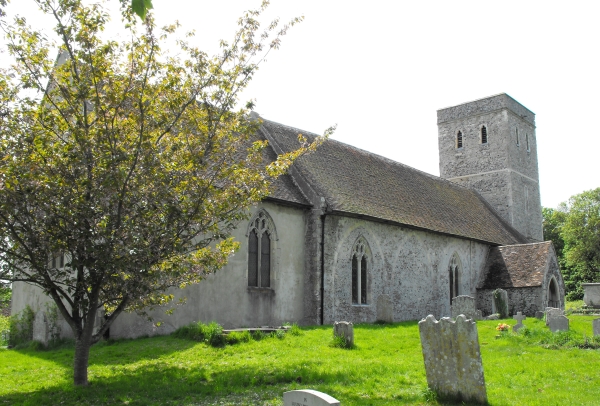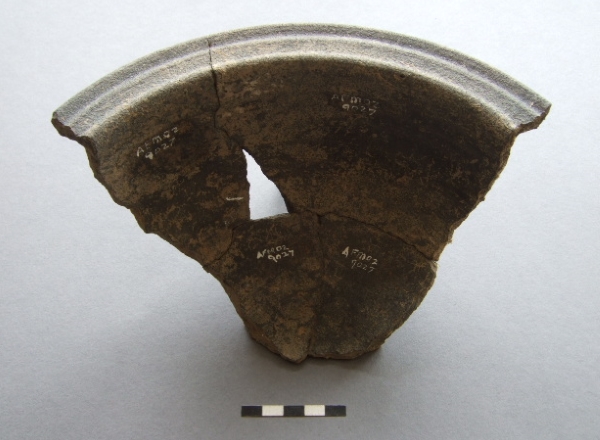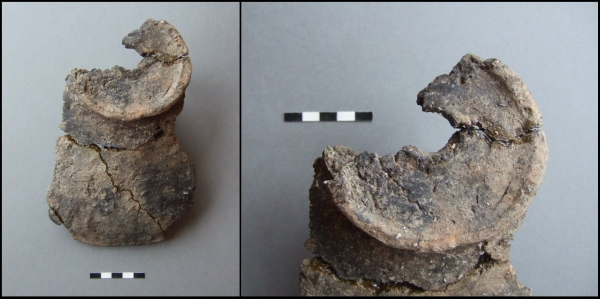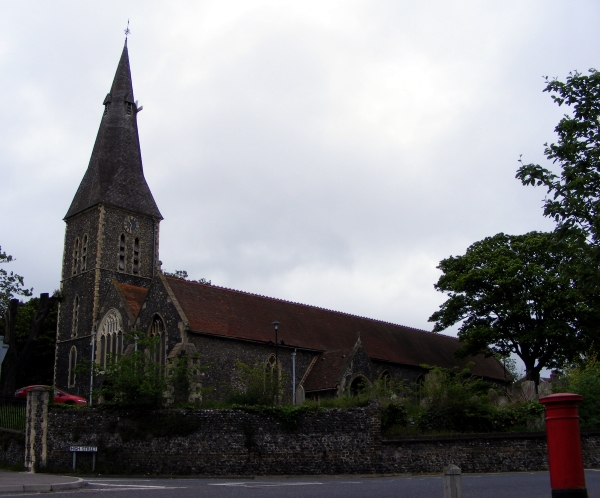 Today’s image for Day 324 of the VM_365 project shows the large parish church of St John the Baptist, Margate. It is located on high ground about a mile inland from the coast and would have been widely visible throughout the parish before the town became more built up in the 19th and 20th centuries. The church was constructed mainly in knapped flint with some ragstone used later.
Today’s image for Day 324 of the VM_365 project shows the large parish church of St John the Baptist, Margate. It is located on high ground about a mile inland from the coast and would have been widely visible throughout the parish before the town became more built up in the 19th and 20th centuries. The church was constructed mainly in knapped flint with some ragstone used later.
St John’s was a chapel to the mother church at Minster until 1275 when it became a parish church in its own right. There may have been a church here as early as the mid 11th century although parts of the original surviving Norman church were probably constructed in the mid 12th century. The Norman church was much smaller than the current structure although it did have a north aisle of two or three bays and part of the existing north aisle and the chancel arcades date to this phase. The church was significantly extended to the west later in the 12th century and the rest of the north and south aisle were added.
Some of the south and north arcades were replaced in the 13th century possibly to resolve problems with the structure which may have the result of a fire or a collapse. The very tall northwest tower was constructed in the 13th century and the spire was added in the 14th century.
In the late 15th to early 16th century, a treasury built of kentish ragstone with a low pitched roof and crenellated parapet was built at the north east end of the church which suggests that the church had become wealthy enough to need somewhere to secure valuables. It later became the place where the churchwardens administered poor relief and as a secure store for gunpowder and weapons.
The exterior of the church was heavily restored in the 1870’s by the well known architect Ewan Christian.
References/Further Reading
Berg, M. and Jones, H. 2009. Norman Churches in the Canterbury Diocese. The History Press.
Colyer, R. 2012. The Parish Church of St John the Baptist, Margate. A short guide. http://www.stjohnschurchmargate.org.uk/churchfamily-history/the-parish-church-of-st-john-the-baptist-margate-a-short-guide-5/
Historic England 2015. The National Heritage List for Britain: The Parish Church of St John the Baptist. List entry no.1351103. http://list.historicengland.org.uk/resultsingle.aspx?uid=1351103&searchtype=mapsearch
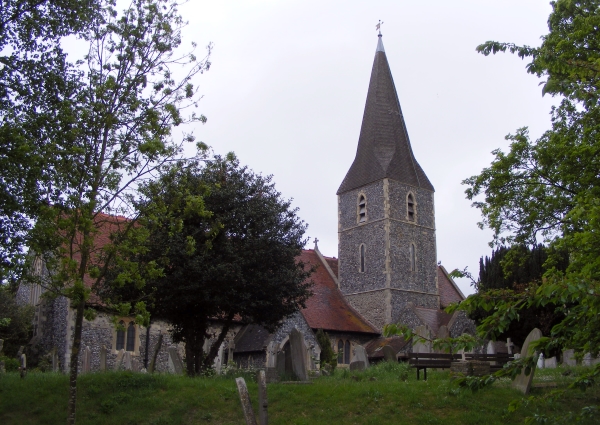 The image for Day 323 of the VM_365 project shows the parish church of All Saints, Birchington. The church is located on high ground approximatley 1.2 km (¾ mile) from the coast and although now heavily built up, the landscape would have been open all the way down to the sea until around the mid 19th century. The churchyard is large and open and has been terraced along the hillside to accomodate the 19th century extension to the graveyard.
The image for Day 323 of the VM_365 project shows the parish church of All Saints, Birchington. The church is located on high ground approximatley 1.2 km (¾ mile) from the coast and although now heavily built up, the landscape would have been open all the way down to the sea until around the mid 19th century. The churchyard is large and open and has been terraced along the hillside to accomodate the 19th century extension to the graveyard.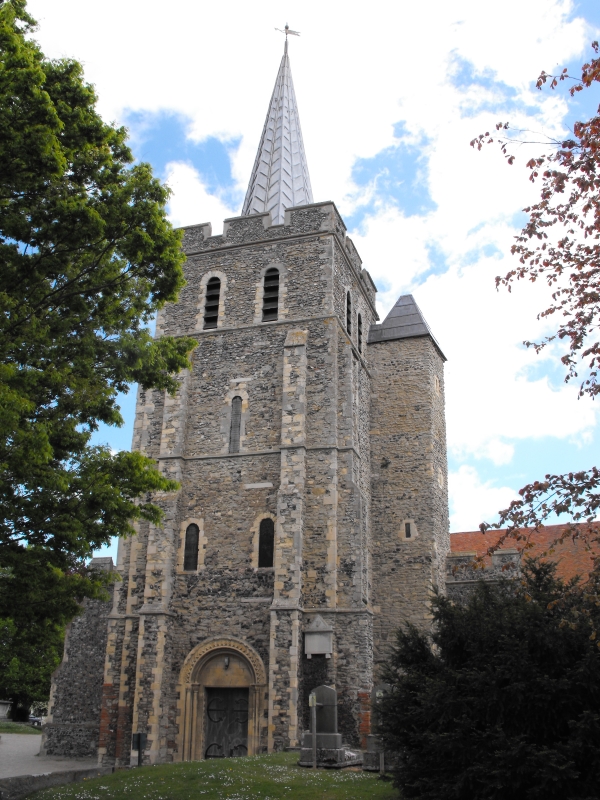 The image for Day 322 of the VM_365 project shows the eastern end of the church of St Mary the Virgin, Minster in Thanet. The church was constructed with a mixture of water rounded flints and Thanet beds sandstone, with Caen stone , Reigate stone and Ragstone used as dressings in the medieval period. Bathstone was used to construct some of the 19th century elements.
The image for Day 322 of the VM_365 project shows the eastern end of the church of St Mary the Virgin, Minster in Thanet. The church was constructed with a mixture of water rounded flints and Thanet beds sandstone, with Caen stone , Reigate stone and Ragstone used as dressings in the medieval period. Bathstone was used to construct some of the 19th century elements.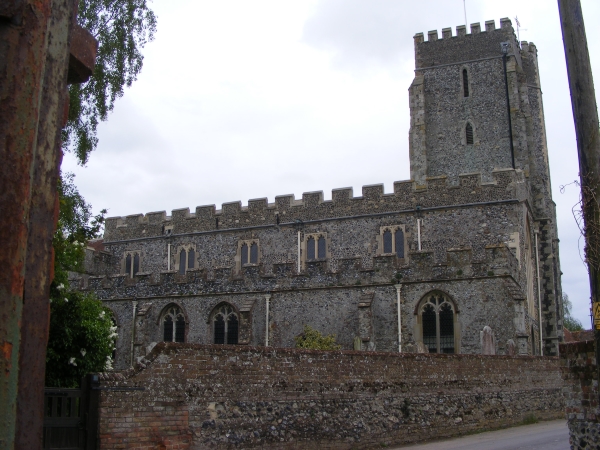 Today’s image for Day 321 of the VM_365 project shows another of our standing archaeological remain, this time the church of St Nicholas, St Nicholas-at-Wade, near Birchington. The earliest church at St Nicholas was built in the late 11th century and parts of it survive in the lower portions of the west wall of the nave. The original church was constructed of large flints and sandstone from the Thanet Beds.
Today’s image for Day 321 of the VM_365 project shows another of our standing archaeological remain, this time the church of St Nicholas, St Nicholas-at-Wade, near Birchington. The earliest church at St Nicholas was built in the late 11th century and parts of it survive in the lower portions of the west wall of the nave. The original church was constructed of large flints and sandstone from the Thanet Beds.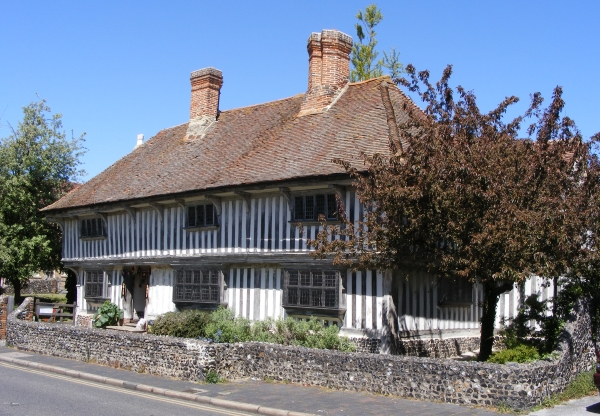
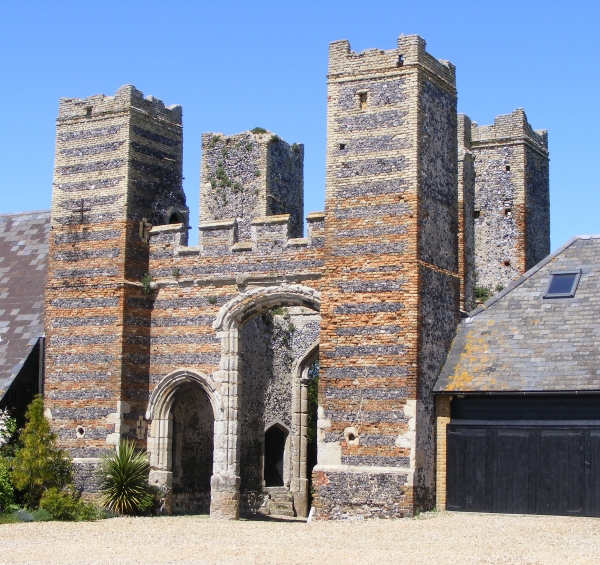 The image for Day 319 of the VM_365 project shows Dent-de-Lion gatehouse, Garlinge. The Gatehouse was constructed in the early 15th century forming the main entrance into the courtyard of a now demolished fortified house which stood to the north.
The image for Day 319 of the VM_365 project shows Dent-de-Lion gatehouse, Garlinge. The Gatehouse was constructed in the early 15th century forming the main entrance into the courtyard of a now demolished fortified house which stood to the north.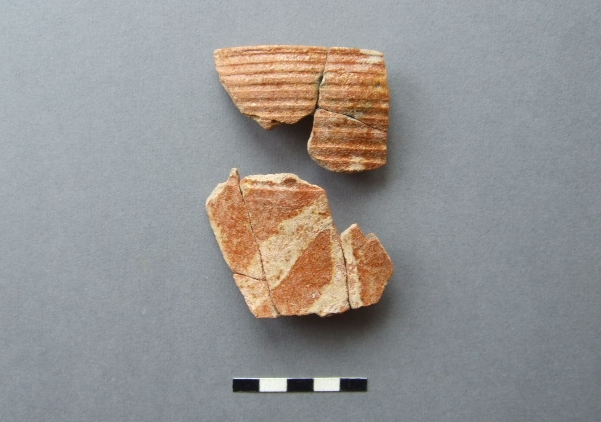 The image for Day 318 of the VM365 project shows sherd fragments from a medieval tableware jug found in 1979 in an excavation at Netherhale Farm, Birchington.
The image for Day 318 of the VM365 project shows sherd fragments from a medieval tableware jug found in 1979 in an excavation at Netherhale Farm, Birchington.